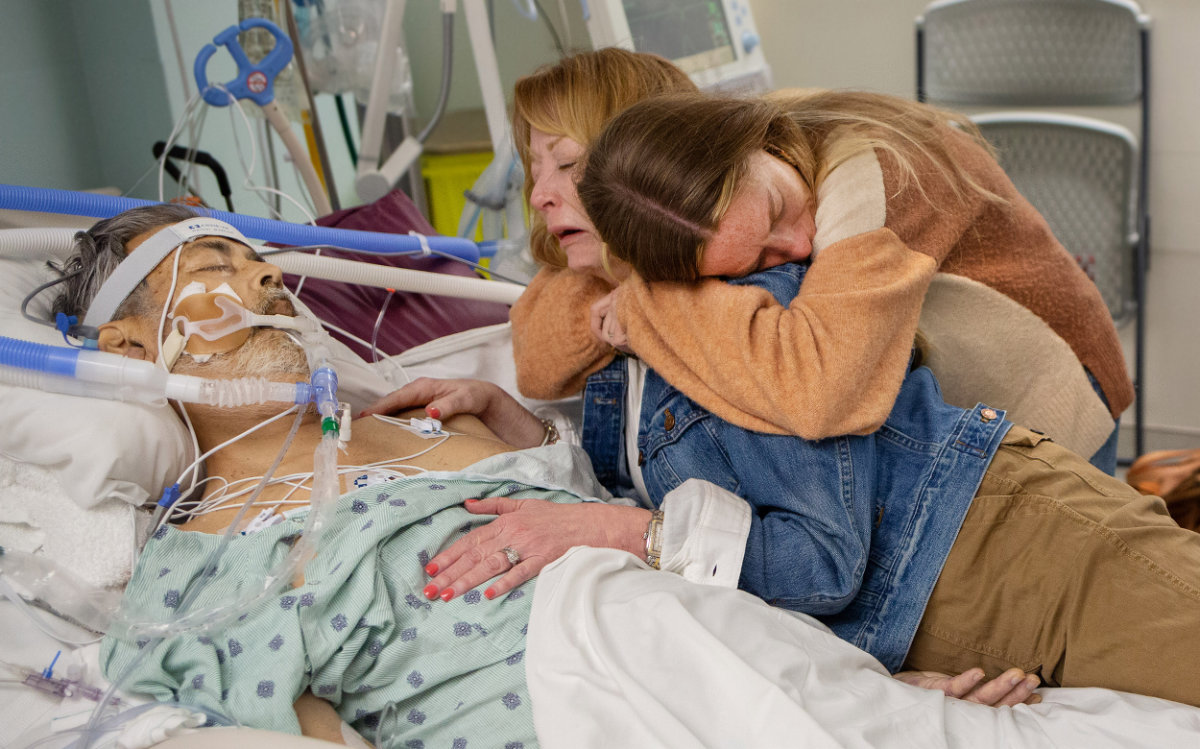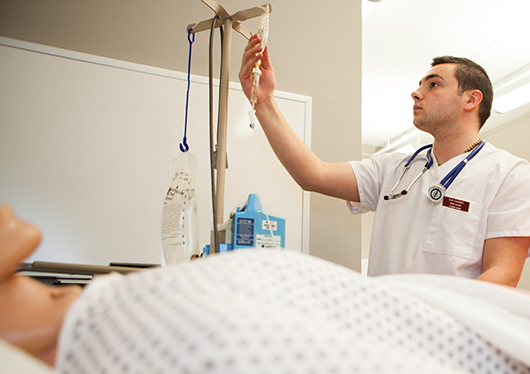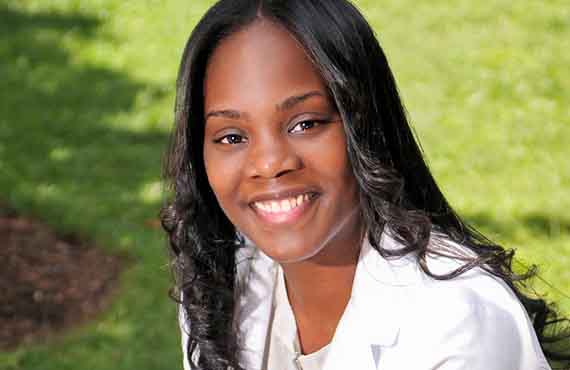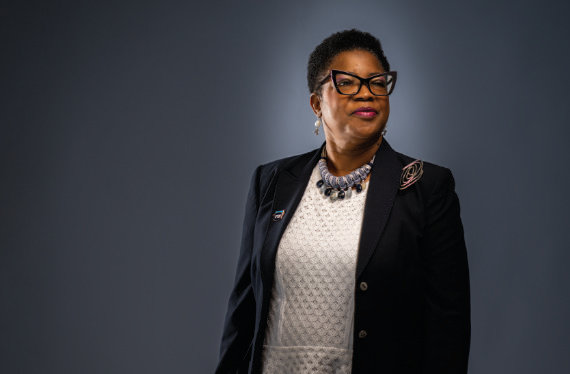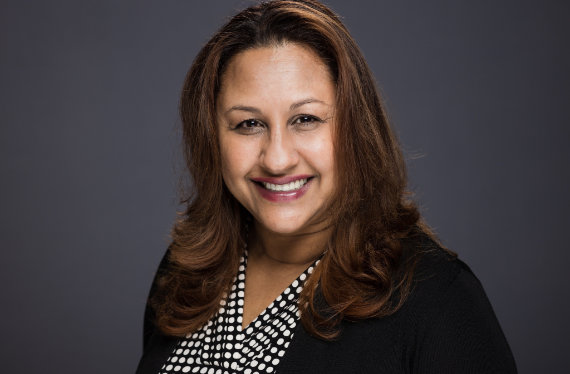ICU Nurse Alan Hawes drew on his years as a photojournalist to document the pandemic
Modest and soft-spoken, Alan Hawes introduces himself to Regis College Assistant Professor Lawana Brown this way: “I’m an ICU nurse with a previous career in photojournalism.”
In the course of that previous career, Hawes’ photographs appeared in Sports Illustrated, The Chicago Tribune, and other newspapers through The Associated Press. A native of Elmhurst, a suburb of Chicago, Hawes first picked up a camera in eighth grade. He would go around town taking pictures of fires and other news events he heard about on his police scanner. “I’d drop it in the night box at the newspaper and then a day or two later, it would appear in the paper with my name on it,” Hawes recalls.
His nursing career began in 2012, influenced by photography assignments at hospital emergency rooms. “I always thought when I was in there that man, if I ever change careers, this is what I want to do,” he tells Lawana.
When Hawes picked up his camera again to document the impact of COVID on patients and staff at Medical University of South Carolina, where he works as an ICU nurse, the tables were turned. Last December, he was profiled on National Public Radio, an appearance which snowballed into coverage on CBS News and other interviews.
“I remember thinking when that first patient rolled in thinking man, I wish I could take a picture of this because it’s like historic in a way,” Hawes says. “This is the beginning.”
When he first pitched the idea of picking up his camera, Hawes anticipated resistance. “I know as a newspaper photographer that whenever I came into a hospital with my cameras, I remember the nurses always being the first ones like ‘Whoa, whoa, whoa, what are you doing with that thing, you can’t have it in here.’ Some people got pretty nasty with me at times.”
Early in the pandemic, he got pushback, but when the vaccine came out, he finally received the go-ahead.
“Once COVID hit, I think there was this understanding and frustration among all care team members that they all felt the same as I did that we wanted the outside world to see what was going on,” Hawes says. “I think that they understood that there was something pictures could do showing what’s going on but also get a message and maybe get people to change their behavior.”
When Lawana first heard Hawes’ story on NPR and saw his photographs, she found herself transported back to work at the beginning of the pandemic. “Looking at the pictures, I can not only see the person but I could feel what the air felt like in the room,” she tells Hawes. “I could hear the alarm bells on the machines and the respirators and think about this nurse and feel the sweat underneath the PPE. Even for us as a healthcare person, it was a very chills-up-the-spine kind of feeling. Immediately I thought about the nurses because I thought this is my family, these are my people. The pictures are so visceral for me.”
Hawes suspected the images would resonate for many but he could not have anticipated the full extent of the public reaction. “I knew it was a pretty unique opportunity so I felt like once the word got out that they would be seen by a lot of people,” he says. “I didn’t know how far it would go. I’ve been blown away about how far it has gone.”
